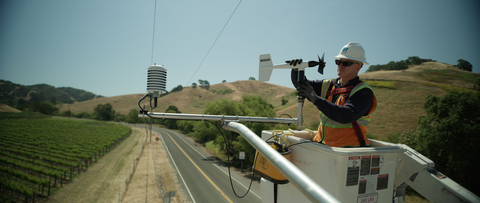Improving Weather Forecasting to Better Predict and Respond to Weather Threats, PG&E Has Installed More Than 200 New Weather Stations This Year
More than 1,200 weather stations are now installed across Northern and

More than 200 new weather stations have been installed this year alone.
Data captured by the weather stations such as temperature, wind speed and humidity levels help
“We know that losing power disrupts lives, especially for our customers with medical needs. That is why we are finding ways to reduce the impact of PSPS events without compromising safety. The sole focus of a PSPS is to keep our customers safe,” said
Since 2018,
“Observations from the weather stations contribute to the improvement of our predictive capabilities for PSPS events. We now have a historical database of these observations, many in remote areas where we have never had this level of detailed data before, and it is now used to help fine-tune our models to better predict when critical fire weather conditions may occur,” said
These 200 new weather stations across PG&E’s service territory are now sending hyperlocal data not only to
The information from these stations is also viewable by the public at pge.com/weather and is combined with other weather station information and shared with partners through MesoWest.
Weather stations are just one part of PG&E’s Community Wildfire Safety Program. The program also includes the installation of hundreds of sectionalizing devices to break the grid into smaller pieces and hardening hundreds of miles of lines, poles, and other infrastructure to reduce wildfire risk and lessen the effects of PSPS events on customers.
Coupled with PG&E’s growing network of weather data, temporary generation and microgrids, these tools and technologies helped keep the lights on for hundreds of thousands of customers during the PSPS events in 2020, as compared to those events in 2019.
About
View source version on businesswire.com: https://www.businesswire.com/news/home/20210824005598/en/
MEDIA RELATIONS:
415-973-5930
Source:







